How ONE Idea Can Change the World: Grej of the Day
Lisa Ng is an experienced English Language Teacher and avid learner. She has worked extensively as a teacher in Asia beginning with private language institutions in Singapore and then moving onto teach at several post-secondary institutions from Australia and the United Kingdom. Her teaching philosophy is simple, strive to be the best teacher you can be, not what others expect you to be. Then, share, share and share! Email:askforlisa@yahoo.ca

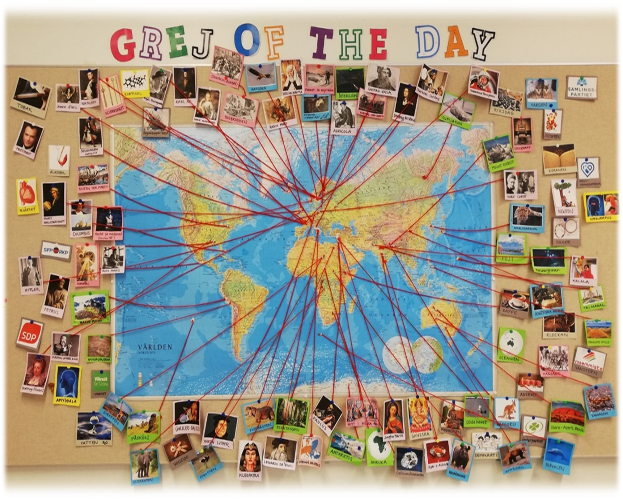
Introduction
Being a teacher will never be an easy position. Apart from teaching, there are often countless hours devoted to assessments, planning and organizational skills to be uncovered. Then, within all these skills are also a myriad of staff meetings and trainings to be absorbed. While learning and honing our teaching skills should always be at the forefront of teaching, there does, however, come a point where all these skills we are presented with may become overwhelming. Evaluating and selecting practices which align with our beliefs is critical to ensure continued success within the classroom for the long term rather than trying ideas as temporary measures until the next ‘new idea’ seeps in. In the quest to expand my knowledge of learning strategies, I came across a gem of an idea called Grej of the Day.
Background
Grej is a Swedish word that represents ‘one thing’. The concept of Grej of the Day was created in 2009 by Micke Hermansson, a former classroom Swedish teacher. As a child, he devoured countless facts and details from published materials including the Guinness Book of World Records in his free time as a hobby. To inspire his students, he decided to share and transfer this incredible wealth of knowledge of his to his students, instilling within them the enthusiasm to be inquisitive and discover new perspectives in the process of learning. Never did he imagine how this one unique idea would transform students’ curiosity to initiate self-directed learning and also work to deepen their thirst for knowledge.
The idea behind the Grej of the Day is simple: give students 1 micro-lesson during the beginning of class. These micro-lessons can be anywhere from 5 – 8 minutes long and the teacher gets to determine which topic to delve into: from the blue sea slug to the Pyramids of Egypt. Teachers are only limited in their topic choices by their imagination.
Steps
There are 3 key components to making any Grej of the Day successful.
Step 1: Piquing their curiosity (1 min)
The teacher begins by giving students a clue the day before regarding the upcoming topic. Unbeknownst to the students, these brief clues are the catalyst to encourage them to explore their thinking as well as prepare their brains for learning. These clues do not need to be extremely detailed and may include a single sentence with some cues being:
- A fun fact about the animal/object/subject to be discussed
- A question for students to ponder
- A famous quote
- An image
- A part of an image
- A short audio clip
- A play on words
- A riddle
Step 2: Fun facts & stories (4-6 mins)
After the students have analyzed the clue and have guessed the topic, the next step is for the teacher to proceed with the main points of the presentation. This is where the magic happens. The teacher begins by providing students with a micro lesson. Within the micro lesson, the teacher captivates the audience by building background knowledge on the subject and infusing the audience with further facts and information packaged in a very compact and dynamic presentation. It is important to note that within these slides, there should be a strong focus on visuals with minimal amount of text, further cementing the acquired information.
This is also the stage which most teachers deviate from, for if the information presented is too long, few facts are retained. The key is to ensure that the teacher not only delivers content effectively, but also presents it in a manner that is intriguing as well as memorable.
Step 3: Ending with a BANG, next clue and the re-teaching. (1-2 minutes)
In the last few slides, the teacher concludes the session in three stages: firstly, ending with a bang, secondly, presenting the next clue and lastly, re-teaching. The Grej of the Day session ends by introducing an exciting and little-known fact regarding the topic, a cliffhanger, a piece of trivia or an extraordinary detail. For instance, “Did you know that the Eiffel Tower was initially supposed to be a gift for Barcelona, Spain but the Spanish government rejected it? Or did you know that sloths can hold their breath longer than dolphins can? Or did you know that supermarket apples can be a year old?” It is best not to tell your students too much as they will lose interest in the subject matter. Following the amazing fact, the teacher provides the class with a clue for the next day’s Grej of the Day. Finally, the session draws to a close when students are tasked with recalling facts from the presentation and then sharing this information with another peer or adult before the next day. It has been shown that students who share information learnt demonstrate a greater retention rate of up to 90% of the material covered in class.
Some teachers have expanded the Grej of the Day concept a step further. They have created classroom display boards linking their learning of the world around them by showing connections between culture, events or people. Others have created notebooks for students to document their learnings or created lunchtime Grej of the Day clubs with clues posted on a designated spot at school and presentations made in large auditorium settings.
Grej of the Days in Class

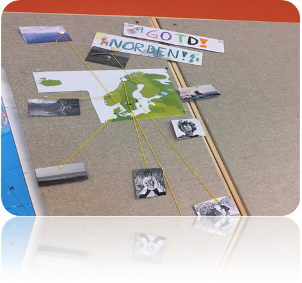

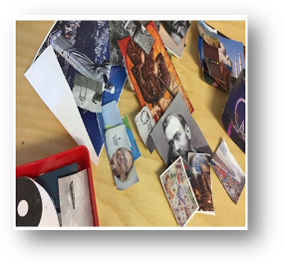
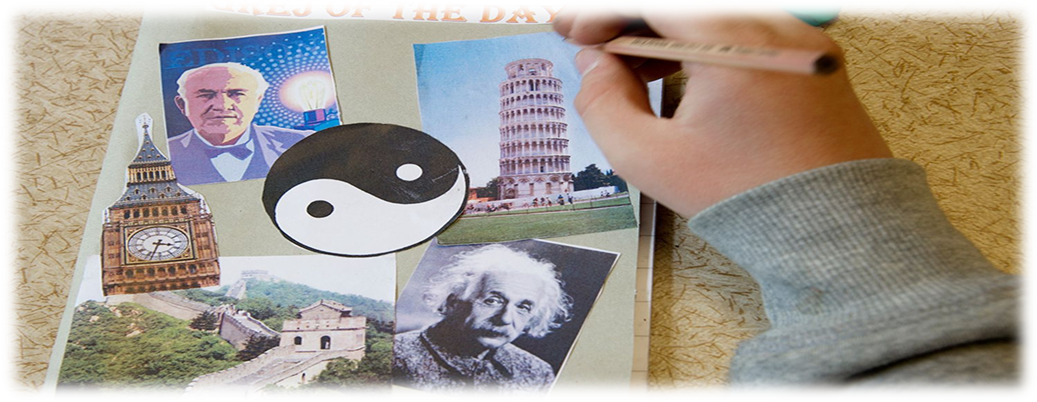
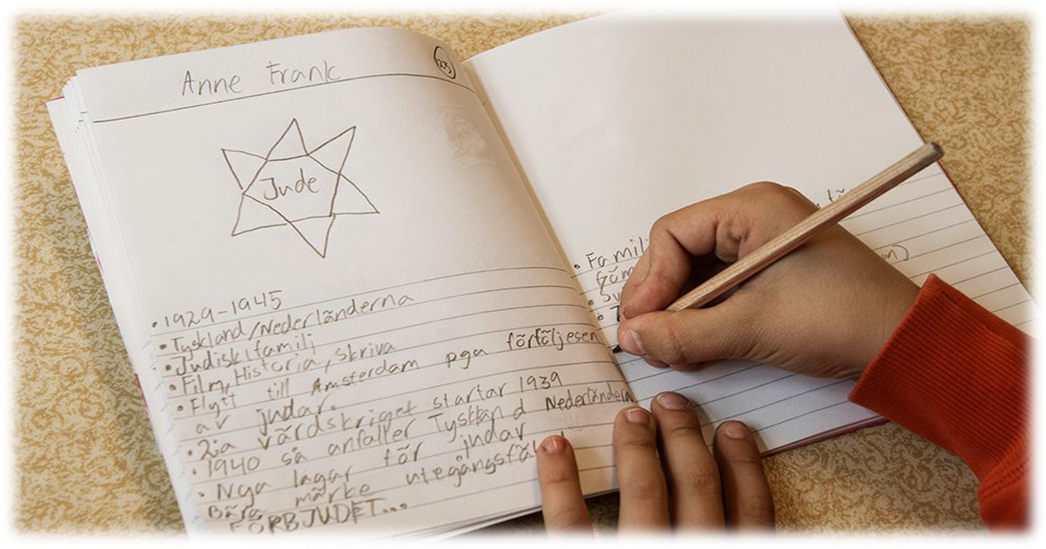
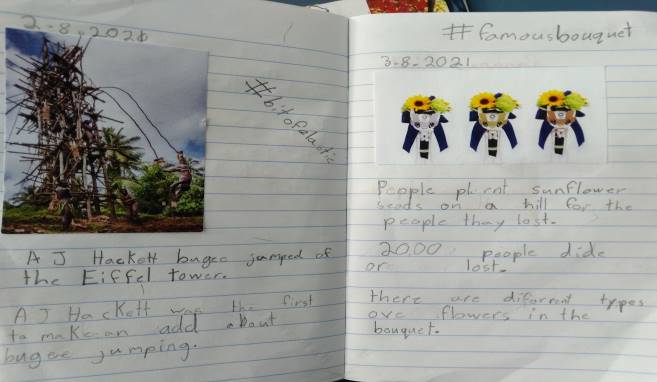
 Students writing down newly learned information in the notebook. Teacher planning book Photos used with permission by: Anna Oosterkamp, 4th grade teacher in New Zealand
Students writing down newly learned information in the notebook. Teacher planning book Photos used with permission by: Anna Oosterkamp, 4th grade teacher in New Zealand
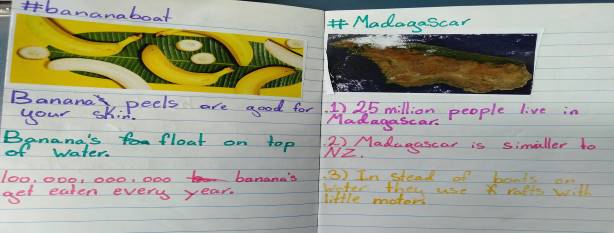


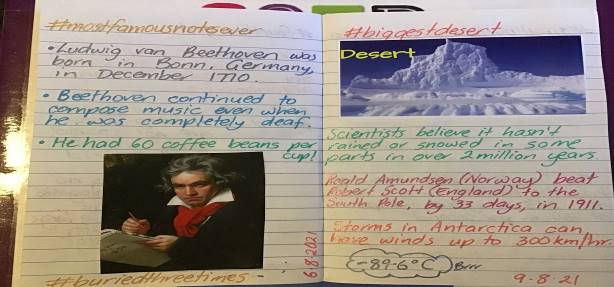
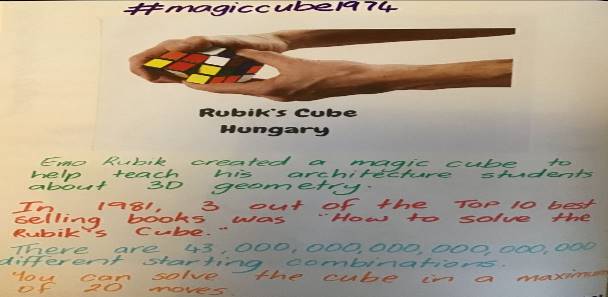
Teacher Perspectives: Impact of Grej of the Day in Classrooms
Question 1: How has Grej of the Day impacted you as a teacher?
I have discovered the benefits of making my lessons “short and sharp”. I have found out the magic in using a teaser (like a clue) to make the students curious about what is going to happen. I have learnt a lot of things about a lot of things, that I can use in different situations.
~ Malin Backswell, classroom teacher in Sweden (5 years using GOTD in the classroom)
The concept taught me: not to use sentences in my powerpoints, to only use big colourful pictures, to always start with a WOW fact when I teach the student something new, to highlight the most important facts in a better way, to work have my students work in shorter bits (maximum of 15 minutes, then change activity…)
~ Ela Strandberg, classroom teacher in Finland (4 years since using GOTD)
Question 2: Has it shifted the way your students learn?
They are interested and WANT to learn more.
They WANT to write – even the ones that usually don’t.
They are more likely to understand cause and effect.
They are more likely to see how events are connected and that we can learn from history.
~ Jenny Carlsson, classroom teacher in Sweden (5 years using GOTD in the classroom)
They learn lots of WORDS that make other subjects, lessons easier to understand. They can relate to a lot of things around the world, when we talk about things in the classroom. Many of the students think that it is easy to remember those short lessons, that makes them realize that they can make themselves to remember other things. I often recommend them to sum other lessons, texts, films, up “like a GOTD”. Most of them find the GOTD interesting, fun, spectacular, and that gives them a positive feeling about learning, about the classroom, hopefully about school…
~ Malin Backswell, classroom teacher in Sweden (5 years using GOTD in the classroom)
The way my students learn has really shifted. Now, when we have had over 100 GOTD, the students can connect almost everything else they learn in school to a GOTD we have had earlier. It is so much easier for them to learn new things when they already have knowledge about so many places, people, historical events, animals, insects, body parts… The more they know, the more they can learn.
GOTD has awaken the desire to learn. They are so eager to learn. They have come to love knowledge. Knowledge has become cool. They are reluctant to miss a school day.
GOTD is a way of getting the students to feel smart, really quickly. If they experience and feel that they are smart, they will get smarter.
One more amazing part is that the parents are getting involved. GOTD is their favourite part of school as well. The students are now talking about school at home. The families are talking school stuff at home.
~ Ela Strandberg, classroom teacher in Finland (4 years since using GOTD)
Conclusion
Although the world of teaching continues to evolve, we as teachers are often inundated with ideas from all angles. As such, it is easy to deviate from our intended paths and continue to remain focused on our goal utilizing the best practices in our field. Despite these setbacks, we as teachers can help foster students’ inquisitiveness by providing them with tools to develop them into lifelong learners. Unlike other innovative ideas, Grej of the Day is notably different. With it, not only can we diversify the content we teach, but we can also develop lifelong skills such as curiosity, confidence, enthusiasm to learn, and willingness to share, all of which are essential for creating a more knowledgeable individual.
References
Backswell, M. 2020. Interview for Grej of the Day [online correspondence]
Carlsson, J. 2019. Interview for Grej of the Day [online correspondence]
Hermansson, M. 2020. Getting started with Grej of the Day (webinar).
Jelmini, M. 2014. Micro-lessons have an effect in Umeå. https://www.svd.se/mikrolektioner-ger-effekt-i-umea
Konen, J. 2017. 9 Questions to Tackle in Demonstrating Knowledge of Your Students. https://www.teacher.org/blog/demonstrating-knowledge-your-students/
Laliberte, M. 2020. 46 Weird Facts Most People Don’t Know. Retrieved from: https://www.rd.com/list/weird-facts/
Strandberg, E. 2019. Interview for Grej of the Day [online correspondence, telephone interview]
Please check the Pilgrims f2f courses at Pilgrims website.
Please check the Pilgrims online courses at Pilgrims website
How ONE Idea Can Change the World: Grej of the Day
Lisa Ng, MalaysiaAspects of Nonkilling Literature
Balwant Bhaneja, Canada